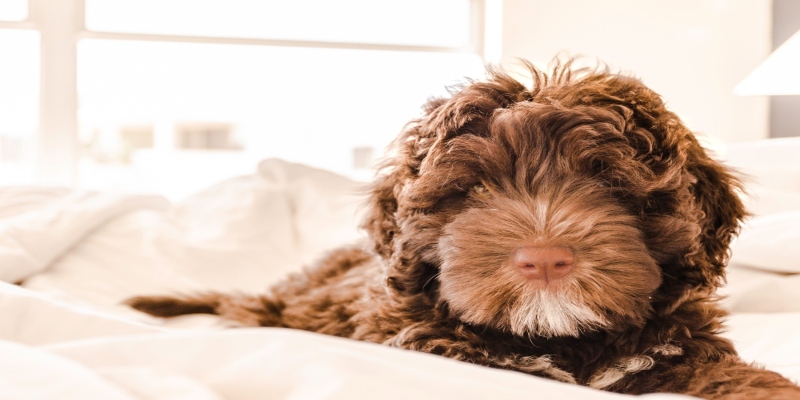Pets & Wildlife
Tips for Pet Proofing Your Home
These steps will help you protect your puppy’s health, while also helping you protect your family’s personal belongings.

The image source is Pexels.
Bringing home a new pet is a joyous occasion for the whole family, but it can quickly turn to disaster if you’re not prepared. Just as you will baby proof your home when you have a new child, you should take steps to pet proof your home. These steps will help you protect your puppy’s health, while also helping you protect your family’s personal belongings.
Start With the Backyard
Pets need to spend plenty of time outdoors where they can run, romp, and play, so you’ll have to make your yard a safe space for them to play. Unless you intend to keep your pet on a sturdy leash, you should consider the option of installing aluminum fences around the perimeter of your yard. This gives your pet much more freedom without having to worry about them wandering off. Additionally, you should build smaller fences around any gardens and plants that you’re growing. Unless you take steps to protect your plants, your pet may destroy them without realizing they’re doing something wrong.
Check the Garage
If your pet is going to have any access to your garage or storage shed, be sure to make that area safer as well. This should involve putting paint and other caustic chemicals on shelves that the pet won’t be able to reach. The floor of the garage or shed should be kept clean, and oil or antifreeze spills should be cleaned up immediately. If your pet licks the spill, they will immediately need medical attention. Finally, secure any sharp objects, such as gardening shears, to keep your pets from hurting themselves.
Keep Living Areas Safer
Your living room, dining room, and den should all be kept secure for your pets by reducing exposure to cords, cables, and electrical outlets. The outlets that aren’t in use should be secured with a protective plate. Additionally, children’s toys, sewing supplies, knickknacks, and other small items should be kept out of the pet’s reach. Your pet may have a tendency to chew or eat plants, so keep potentially poisonous plants away from the pet as well.
Limit Access to Bedrooms
As a general rule, pets shouldn’t be able to get into bedrooms without supervision. When they are allowed into a bedroom, be sure clothing and shoes are all put away in dressers or in closets. Cosmetics, hair care products, cologne, and similar items should be kept in drawers to limit the pet’s ability to access those chemical products. Similarly, bottles of medication should be put away in secure locations. Cables and cords for phone chargers, computers, and stereos should all be kept out of easy reach to keep your pets from chewing through the cords.
Eliminate Hazards in the Kitchen and Bathrooms
When it comes to pet proofing your home, the kitchen and bathroom areas require special attention. Any cupboard or cabinet that the pet can easily reach should be secured with a latch or lock. Childproof latches are especially effective for this use. Trash cans in these areas should also be covered with a secure lid to prevent the pet from accessing its contents. The lids should be kept down on all of the toilets in the home to prevent your pet from drowning or from drinking treated water. Food should be kept secured, and any food kept in kitchen cabinets or on kitchen islands should be transferred to plastic containers with secure lids. Be sure you eliminate or block small spaces behind stoves, refrigerators, or other large household appliances.
Save Your Furniture
Young pets who are teething also have a tendency to gnaw on the legs of tables, desks, and chairs, so be watchful for this type of behavior and scold the pet right away. Providing them with chew toys and rawhide bones can help with teething, while preventing your furnishings from being destroyed. Cold temperatures soothe the gums for a teething puppy, which is why many people put chew toys and bones in the freezer before giving them to their pet.
Final Thoughts
If your pet does get into something it shouldn’t, be sure to try to get the object away from them as quickly as possible. If the pet swallows a foreign object or hazardous substance, you should call your vet right away. They may need medical treatment if the object is poisonous to your pet. In that situation, an emergency vet visit will help ensure your pet will be returned to a healthy and happy state.













